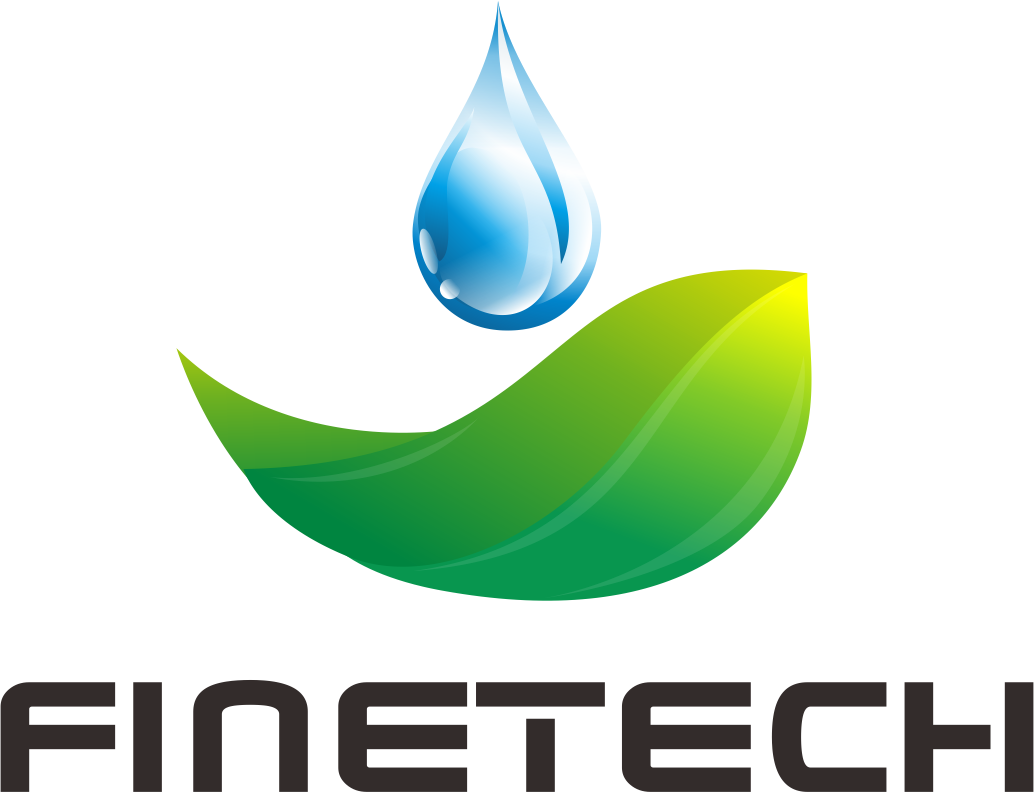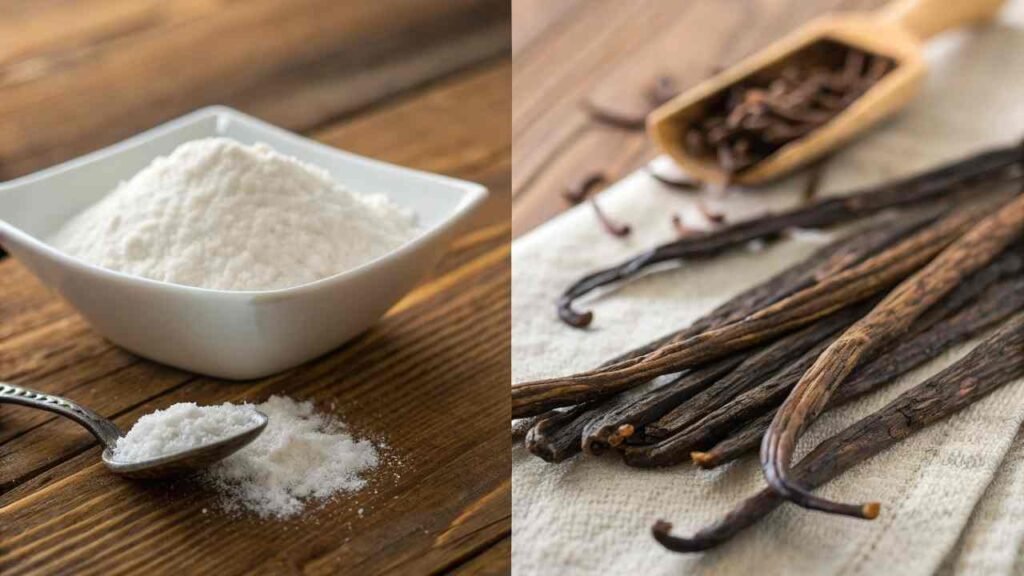Confused choosing between vanillin and vanilla extract? Wondering about cost, flavor, and labeling differences? Let's clarify these common questions for food manufacturers.
Vanillin is a single flavor compound, the main one found in vanilla beans. Vanilla extract is a complex mixture containing hundreds of compounds from the bean. This difference impacts flavor, cost, and labeling.
At FINETECH, we supply both vanillin and help clients source other flavor ingredients. Understanding the fundamental differences between vanillin and vanilla extract is crucial for making the right choice for your product and budget. Let's break down these differences.
What Makes Vanillin Chemically Simpler Than Natural Vanilla?
Why is vanillin simple, but extract complex? What's the basic chemistry difference? Let's look at the molecules.
Vanillin is one molecule (4-hydroxy-3-methoxybenzaldehyde). Vanilla extract is that molecule plus hundreds of others from the bean, creating complexity.
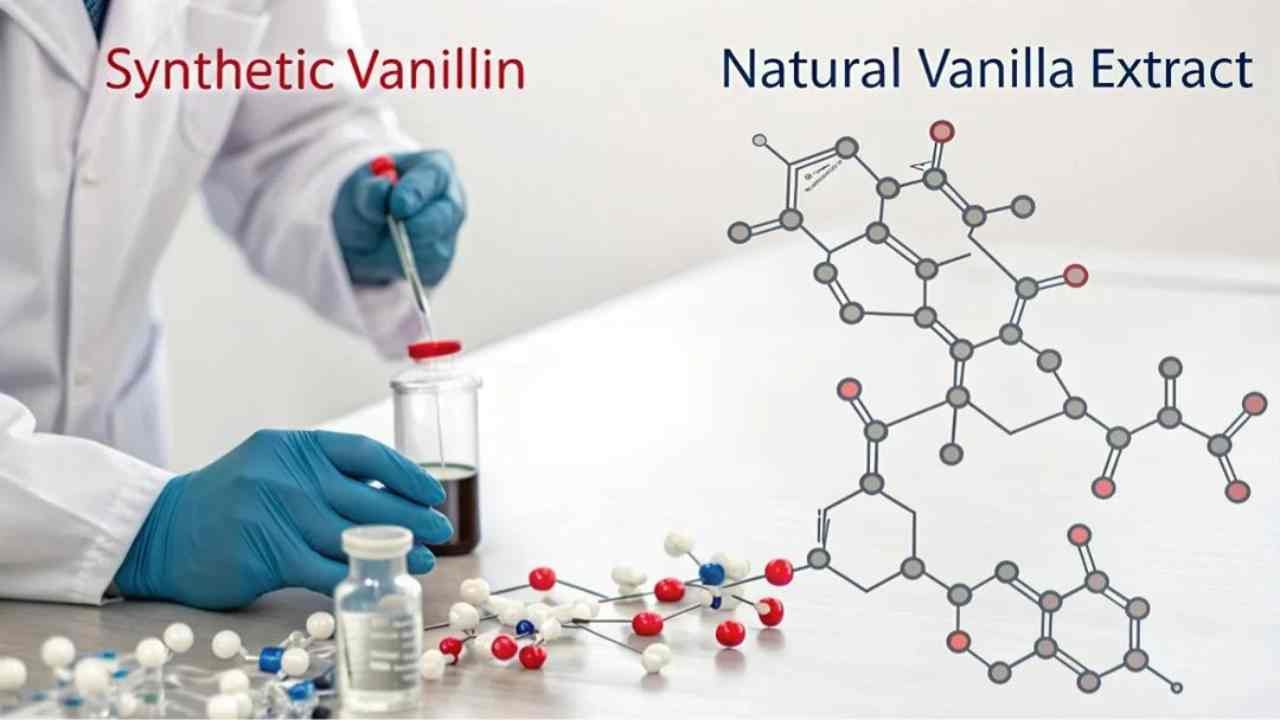
It boils down to one ingredient versus many.
- Vanillin: A single, defined chemical. Whether natural or synthetic, the molecule is the same. Offers a consistent, core vanilla flavor.
- Vanilla Extract: Made by soaking beans in alcohol/water. Extracts vanillin plus hundreds of other minor compounds1 (acids, esters, phenols). These extras add depth, richness, and nuance (floral, woody notes).
Comparison:
| Feature | Vanillin | Vanilla Extract | Key Difference |
|---|---|---|---|
| Composition | Single Molecule | Complex Mixture | Simplicity vs. Depth |
| Flavor | Core Vanilla Note | Rich, Nuanced Vanilla | One note vs. Many |
| Consistency | Very High | Can Vary Slightly | Predictable vs. Richer |
How Much Vanillin is in Natural vs. Synthetic Vanilla Products?
How much actual vanillin flavor is in extract vs. synthetic powder? Let's check the concentration.
Natural vanilla extract has roughly 1-2% vanillin. Synthetic vanillin powder is typically over 99% pure vanillin.

Concentration2 impacts usage and cost hugely.
- Natural Extract: Low percentage of vanillin, diluted in solvent with many other flavor compounds. Reflects the ~1-2.5% vanillin found in quality beans.
- Synthetic Vanillin: Almost pure vanillin molecule. Highly concentrated flavor.
Concentration Snapshot:
| Product | Vanillin Content | Other Stuff | Key Point |
|---|---|---|---|
| Vanilla Beans | ~1-2.5% | Hundreds | Natural source |
| Vanilla Extract | ~1-2% | Hundreds + Solvent | Dilute, complex |
| Synthetic Vanillin | > 99% | Minimal | Highly concentrated |
This difference in concentration means that much smaller amounts of synthetic vanillin are needed to achieve the same vanilla flavor intensity3 as natural vanilla extract, impacting formulation and cost significantly.
Can Vanillin Fully Replace Vanilla Extract in Recipes?
Thinking of swapping vanillin for vanilla extract to save costs? Can it deliver the same result? Let's examine if vanillin is a complete substitute.
No, vanillin cannot fully replace vanilla extract without changing the flavor profile. Vanillin provides only the core vanilla note, lacking the complexity and depth of the full extract.
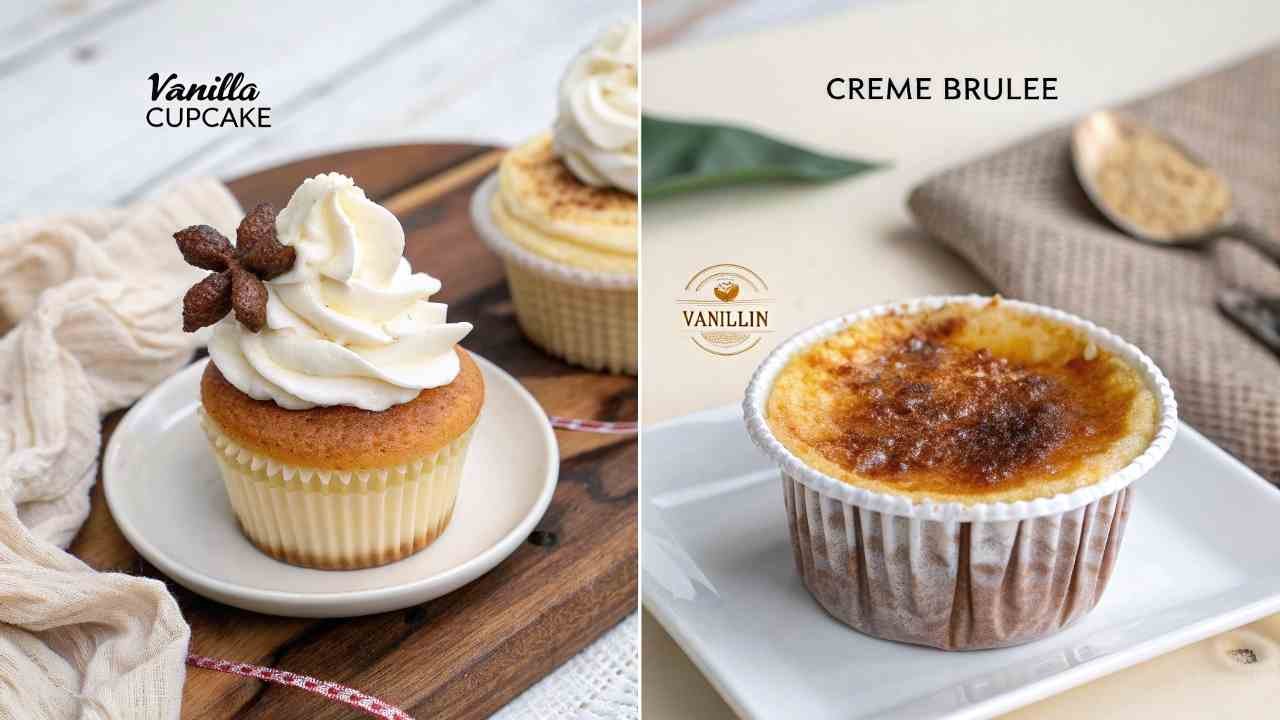
Using only vanillin changes the taste.
- Vanillin: Clean, basic vanilla flavor. Consistent. Can taste "flat" or "artificial" alone in some applications.
- Extract: Richer, deeper, more complex flavor. Preferred for premium products where vanilla stars.
When to Use Vanillin (Adjust Dose!):
- Background flavor (e.g., chocolate chip cookies).
- Cost-sensitive products.
- Where consistency is key.
When Extract is Better:
- Premium products (gourmet ice cream, custards).
- When complex, authentic vanilla flavor is desired.
Comparing Suitability:
| Application Example | Vanillin Suitability | Vanilla Extract Suitability | Reason for Difference |
|---|---|---|---|
| Large Batch Cookies | Often Adequate (Cost, Consistency) | Good (Better Flavor) | Competing flavors may hide complexity differences. |
| Gourmet Vanilla Ice Cream | Less Ideal (Lacks Complexity) | Preferred (Rich, Complex Flavor) | Vanilla flavor is primary and needs depth. |
| Chocolate Cake | Often Adequate (Background Note) | Good (Subtle Enhancement) | Chocolate dominates, vanilla supports. |
| Crème Brûlée | Less Ideal (One-Dimensional) | Preferred (Nuance, Authenticity) | Delicate flavor requires extract's complexity. |
| Cost-Driven Products | Preferred (Lower Cost) | Less Preferred (Higher Cost) | Economics often dictate choice. |
Why Do Companies Prefer Vanillin Over Whole Vanilla Beans?
Given the flavor complexity of beans, why is vanillin so widely used? What makes companies choose the simpler compound? Let's look at the practical business reasons.
Companies prefer vanillin mainly due to its dramatically lower cost, stable and predictable supply, consistent flavor profile, ease of handling, and better stability during food processing.

Practical factors often outweigh flavor complexity in large-scale production.
Key Advantages of Vanillin:
- Cost: Dramatically cheaper than beans/extract.
- Stable Supply: Reliable industrial production vs. risky agriculture.
- Consistency: Same flavor batch after batch.
- Ease of Use: Stable powder, easy to handle and store.
- Stability4: Holds up well in processing (heat, pH).
Factor Comparison:
| Factor | Vanillin (Synthetic) | Vanilla Extract/Beans | Vanillin Advantage |
|---|---|---|---|
| Cost | Very Low | Very High | Huge Savings |
| Supply | Stable | Volatile | Reliability |
| Consistency | Very High | Moderate | Predictable Quality |
| Handling | Easy Powder | Liquid / Beans | Convenience |
These practical benefits make vanillin dominant in processed foods.
Does Vanillin Affect Food Labeling Differently Than Vanilla Extract?
Labeling ingredients correctly is crucial. Do regulations treat vanillin differently from vanilla extract? Let's examine the labeling requirements.
Yes, labeling is strictly different. "Vanilla extract" requires specific bean content. Vanillin must be labeled based on its source: "vanillin," "artificial flavor," or sometimes "natural flavor."
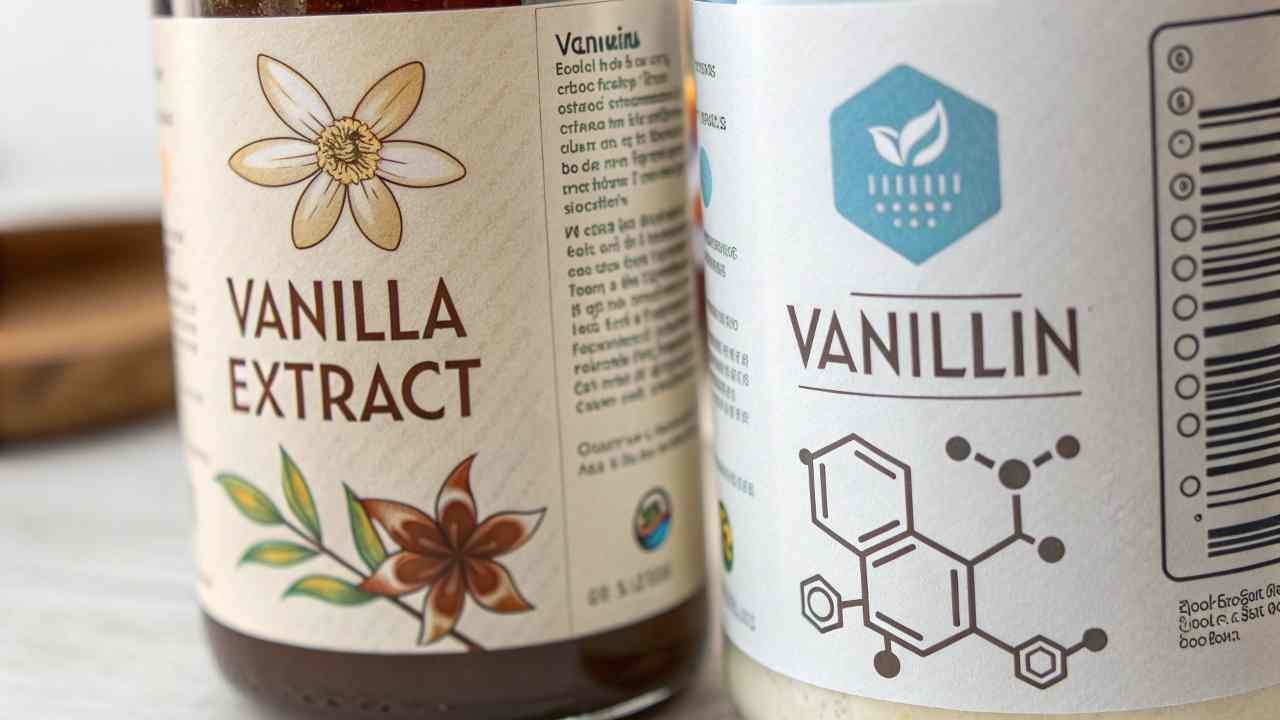
Correct labeling avoids trouble. Rules vary globally (US FDA, EU, Middle East GSO, etc.), so knowing your ingredient source is vital. FINETECH provides accurate documentation.
Labeling Guide (Examples):
- Vanilla Extract: From beans, meets standards -> "Vanilla Extract".
- Synthetic Vanillin: From guaiacol/lignin -> "Vanillin," "Artificial Flavor".
- Ethyl Vanillin: Synthetic -> "Ethyl Vanillin," "Artificial Flavor".
- "Natural" Vanillin: From fermentation/natural precursors (non-bean) -> "Natural Flavor5" (specific rules apply).
Label Summary:
| Product Source | Common Label Term (Varies) | Key Point |
|---|---|---|
| Beans (Extract) | "Vanilla Extract" | Meets standard |
| Synthetic Vanillin | "Artificial Flavor," "Vanillin" | Not from beans |
| Non-Bean Natural Process | "Natural Flavor" (sometimes) | Process, not source |
Labeling depends entirely on the ingredient's origin and production method.
Conclusion
Vanillin offers cost-effective, consistent vanilla flavor as a single molecule. Vanilla extract provides complex, nuanced flavor from hundreds of bean compounds. The choice depends on application, cost, and labeling needs.
-
Understanding minor compounds can deepen your appreciation for flavor profiles and their impact on taste and aroma. ↩
-
Understanding concentration's effects can help optimize resource allocation and reduce costs effectively. ↩
-
Learn about the measurement of vanilla flavor intensity to appreciate the differences between natural and synthetic options. ↩
-
Learning about stability in food processing can provide insights into quality control and product longevity. ↩
-
Learning about the qualifications for Natural Flavor can help you make informed choices about the products you consume. ↩
